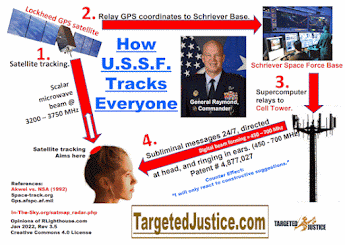Patent No. 4354505 Method of and apparatus for testing and indicating relaxation state of a human subject
Patent No. 4354505
Method of and apparatus for testing and indicating relaxation state of a human subject (Shiga, Oct 19, 1982)
Abstract
In a self-training biofeedback system, a physiological signal representing the state of relaxation of a person using the system is applied to a time counter to generate a binary count output representing the relaxation period. A visual indicator connected to the time counter provides the self trained person with a quick display of the measured time period so he can gauge the depth of his relaxation.
Notes:
BACKGROUND
OF THE INVENTION
The present invention relates to self-training biofeedback systems for indicating
the mental condition of a person to assist him in bringing his mind into a state
of relaxation.
It is well known that human mental activity can be measured in terms of electrical
activity of the brain as represented by the brain waves, or in terms of electrical
potential changes measured by electromyographic method, or potential changes
at the surface of the skin or temperature at the skin surface. It is also known
that these physiological phenomena can be used to control the autonomous nerve
system of the person or as a means for rehabilitation of incapacitated people.
More specifically, when a human subject is in a relaxed state of mind, the predominant
brain waves are the so-called alpha waves and the muscle potential decreases
to a low level with an increase in the electrical resistance and temperature
of his skin. Conversely, when the subject in a strained or highly excited state,
brain waves called beta waves, are predominant and the muscle potential increases
with a decrease in skin electrical resistance and temperature.
Thus, an indication of such physiological signals could serve as a guide to
lead the person into a relaxed state of mind. This kind of mind control is called
"biofeedback" and the apparatus used for such therapy is called a biofeedback
system.
Most prior art biofeedback systems, however, are only capable of indicating
the presence of a state of relaxation by means of an audible or visual indicator,
so that the person using the system remains unaware of the interval while the
desired state is maintained. One approach would be to employ a costly recording
apparatus comprising stylus which traces the detected signal on a recording
sheet, which is unsatisfactory for household use.
SUMMARY OF THE INVENTION
An object of the present invention is to provide an improved self-training biofeedback
system for household use which measures the length of time during which the
user is in a state of relaxation and gives a visual indication of the measured
time on a real time basis.
The state of relaxation is usually attained by the act of meditation. It is
usually difficult for laymen to attain a state of complete relaxation. The general
tendency is for laymen to repeat the process of going into a state of incomplete
relaxation and returning therefrom to an unrelaxed state during the initial
stage of meditation. The biofeedback system of the invention provides the user
with a quick indication of the persistence of the relaxation state. This allows
the user to gauge the depth of relaxation and encourage him to make further
attempts to reach the point where his mental and physical stresses are completely
liberated.
According to the invention, various modes of time measurement are available.
In one embodiment a total count value of relaxation periods is measured and
simultaneously indicated. Since the length of sustained relaxation is an indication
of the degree of his attainment, each count value of the successively occurring
relaxations is indicated by updating the previous count. Thus, in another embodiment
the count value is cleared when the person using the system subsequently enters
the state of relaxation. In this embodiment, minimum and maximum time counts
may also be detected for separate indications to allow the user to compare his
attained results. In further embodiments, a ratio of the total time period to
a given interval of time during which he has performed meditation is derived.




Comments